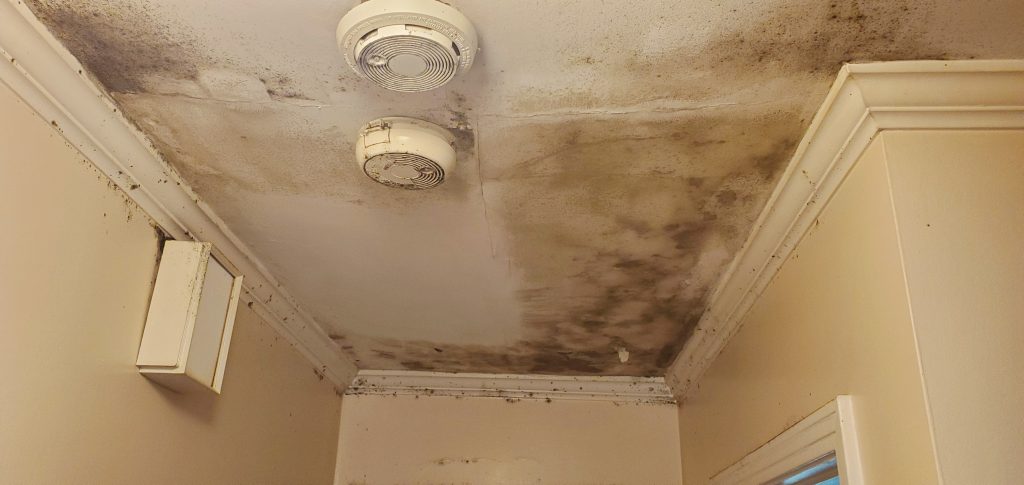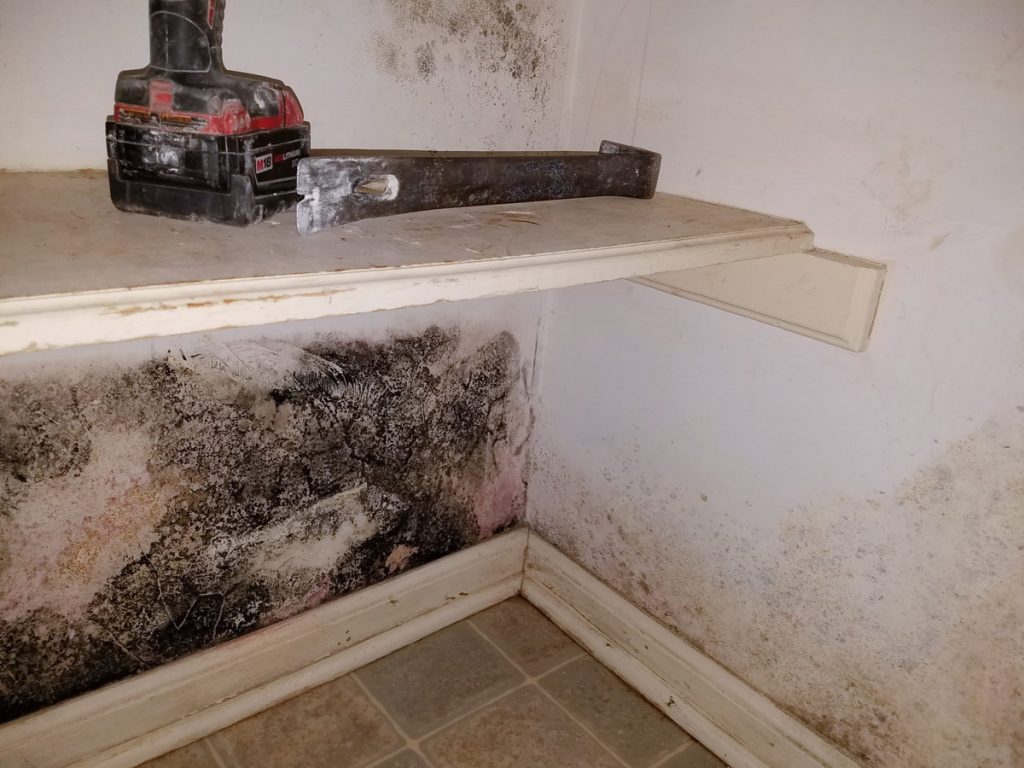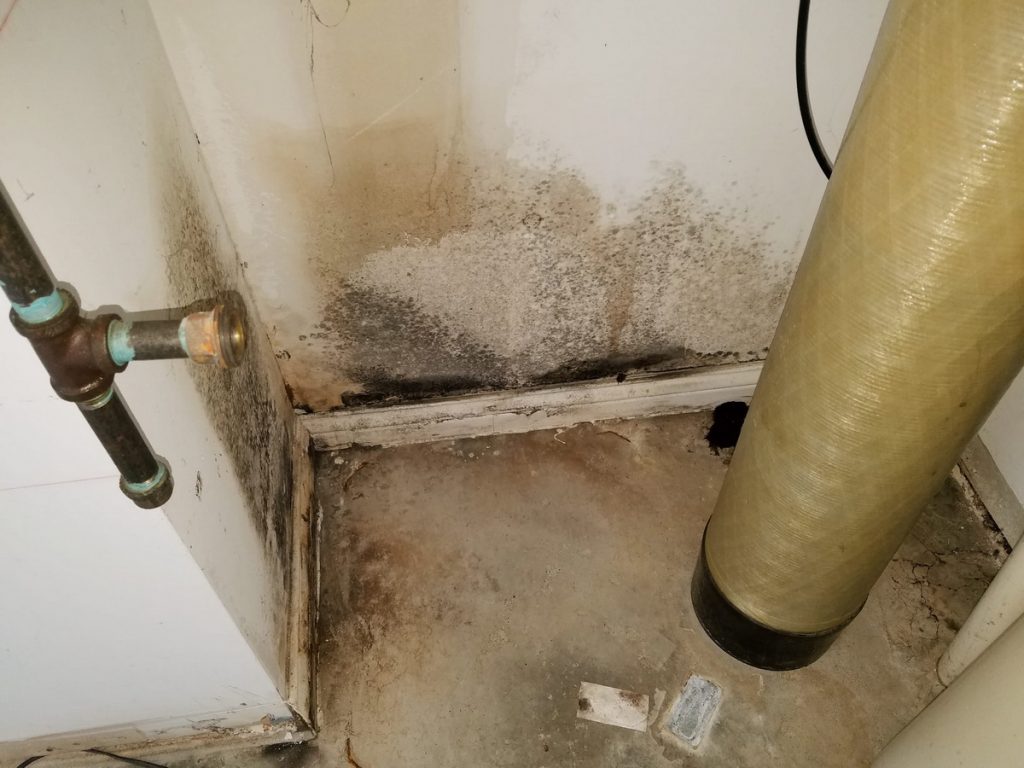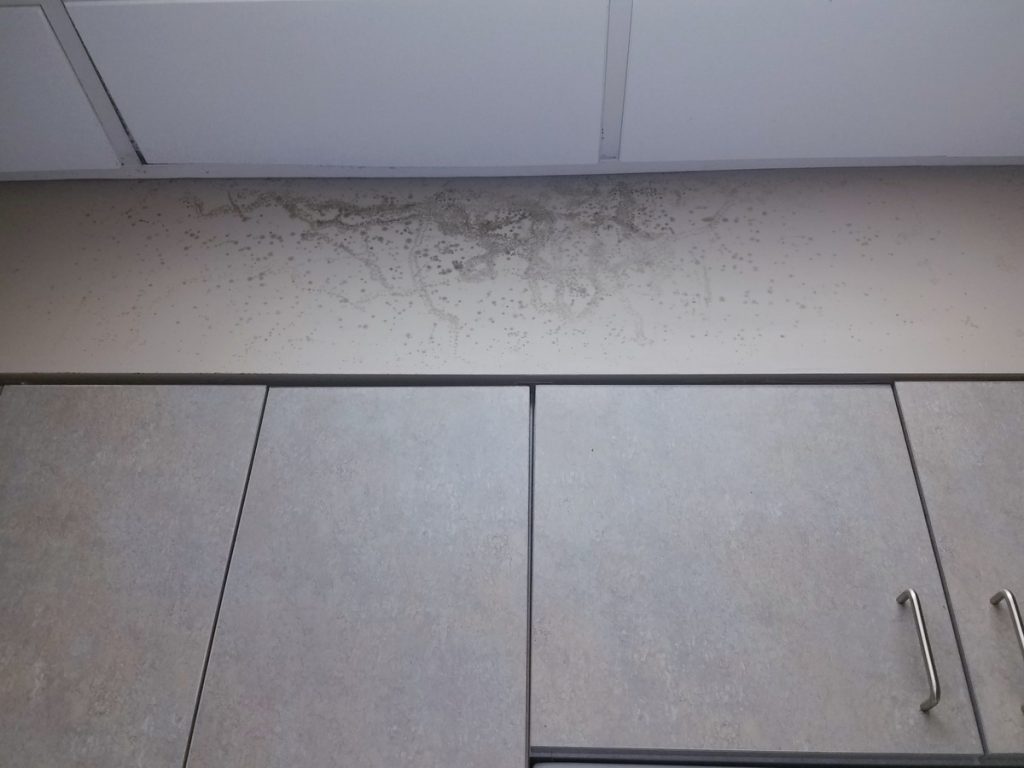It’s summer in Nashville which means it’s hot and humid – the perfect combination for mold growth. Here’s the thing. We all have mold in our home. That doesn’t mean they’re all making us sick. Our immune systems have learned how to adapt to different forms of fungus.
4 Most Common Types of Mold Found in the Home:
- Penicillium
- Cladosporium
- Alternaria
- Aspergillus

Mold growth on a hallway ceiling caused by an untreated water leak. | Photo: Blue Chip Restoration
Our clients continue to share fear stories they’re told over and over again about how all mold is toxic. Many times, they are told there is stachybotrys, the toxic “black mold,” in their home. The reality is, it’s extremely unlikely you have stachybotrys, unless there has been an untreated water damage in your home for a very extended period of time. Most of the molds we see are not the “toxic” varieties. Most are allergenic, which some people may have a sensitivity to, but overall they are not dangerous to our health.
We do run across black mold from time to time, but it’s far from the most common mold we see. Mold is colored by what it eats, not by what it is. That “black mold” people report may be black in color, but that’s because of its food source, not its toxicity. It is extremely important to have your home properly tested by a licensed third-party inspector in order to distinguish its type. This will also give you peace of mind that you’re really not dealing with the toxic stuff.
We are frequently asked if we do mold inspections and we do not offer that service. We prefer to have a third-party inspection company come in before we start the work and then again after our work is completed to ensure all areas have been properly cleaned. We think of it this way – as students we didn’t grade our own tests. If we did, we all would have had straight A’s! We apply the same logic to remediation and inspection. We are happy to refer you to several inspection companies who are experienced with mold testing.
When it comes to cleaning mold, we adhere to the guidelines set by the Institute of Inspection Cleaning and Restoration Certification (IICRC). We also follow guidelines set by the EPA and CDC.

Mold growth in a utility closet caused by a water leak. | Photo: Blue Chip Restoration
Control Moisture. Control Mold.
The key to controlling mold growth is to control the moisture. Mold needs three conditions to grow:
• An ideal temperature between 70-90 degrees Fahrenheit.
• A source of food, which can be anything, particularly materials that are porous.
• Moisture. Mold will grow in areas where the relative humidity is 60% or above.
EPA.gov offers a few tips for controlling moisture in your home.
Top 6 Tips from Environmental Protection Agency to Control Moisture
- When water leaks or spills occur indoors be sure to act quickly. If wet or damp materials or areas are dried 24-48 hours after a leak or spill happens, in most cases mold will not grow.
- Clean and repair your roof gutters regularly.
- Make sure the ground slopes away from the building foundation, so that water does not enter or collect around the foundation.
- Keep air conditioning drip pans clean and the drain lines unobstructed and flowing properly.
- Keep indoor humidity low. If possible, keep indoor humidity below 60%. Ideally keep it between 30-50% relative humidity. Relative humidity can be measured with a moisture or humidity meter. This is a small, inexpensive ($10-$50) instrument available at many hardware stores.
- If you see condensation or moisture collecting on windows, walls or pipes act quickly to dry the wet surface and reduce the moisture/water source. Condensation can be a sign of high humidity.
Blue Chip Restoration’s Recommendations for Preventing Mold
- Make sure your home is properly ventilated, especially the basement, with adequate air supply and return ducts.
- Run a fan to promote air circulation.
- Replace air filters regularly.
- Cover cold surfaces, such as cold-water pipes, with insulation.

Mold growth on drywall caused by a leaking appliance. | Photo: Blue Chip Restoration
Do It Yourself or Call in a Professional?
The EPA recommends that if the moldy area is roughly less than 10 square feet, you can probably handle the job yourself. They share several tips and techniques on their website. There are many resources available there, so if you do want to tackle the area yourself, we recommend reading their protocol for clean-up and safety.
• Fix plumbing leaks and other water problems as soon as possible. Dry all items completely.
• Scrub mold off of hard surfaces with detergent and water, and dry completely. (We recommend Dawn dish soap.)
• Absorbent or porous materials, such as ceiling tiles and carpet, may have to be thrown away if they become moldy. Mold can grow on or fill in the empty spaces and crevices of porous materials, so the mold may be difficult or impossible to remove completely.
• Avoid exposing yourself or others to mold.
• Do not paint or caulk moldy surfaces. Clean up the mold and dry the surfaces before painting. Paint applied over moldy surfaces is likely to peel.
• If you are unsure about how to clean an item, or if the item is expensive or of sentimental value, you may wish to consult a specialist. We can refer you to several experienced contents repair specialists.

Mold growth in an office building caused by a water leak in the ceiling. | Photo: Blue Chip Restoration
The first bullet point is really the most important. If you don’t fix the source of the water or moisture, the mold will return. If the moldy area in your home is larger than 10 square feet, that’s where we come in. We will inspect the area and then recommend a licensed mold inspector to test the mold before we begin the remediation process. We take great care to contain the area, so you don’t have to worry about contamination in the rest of the house. Once we’re finished with remediation, the third-party inspector will come out and test again to make sure all areas have been properly cleaned.
Don’t be scared by mold, and don’t let anyone scare you with the word “mold.” Remember it is rarely as bad as it may seem, and if it is that bad, we are here to help.